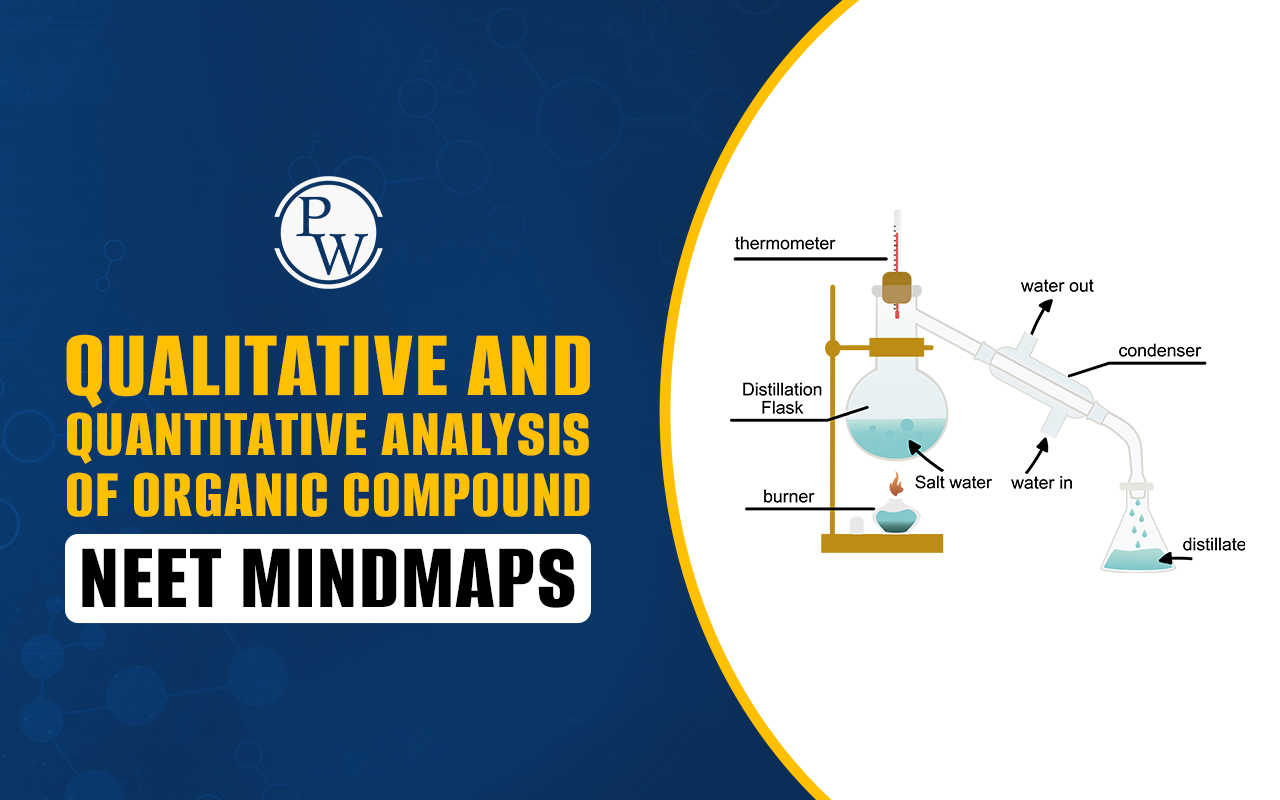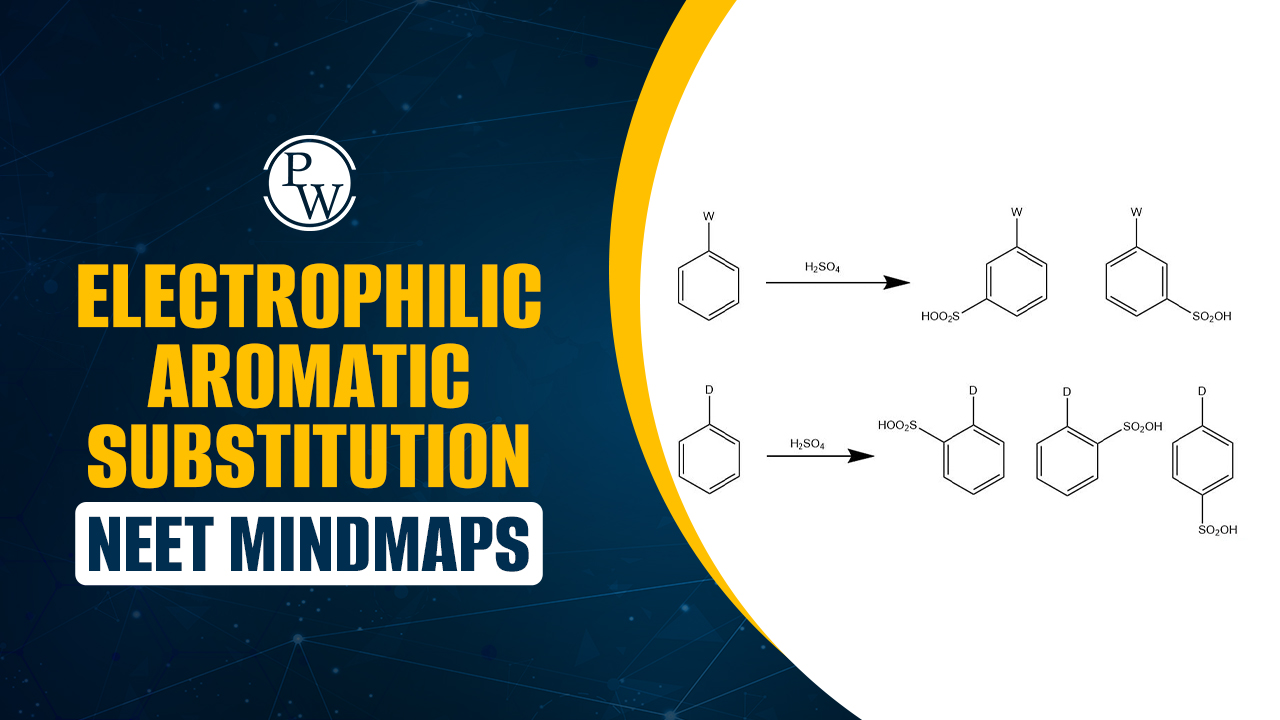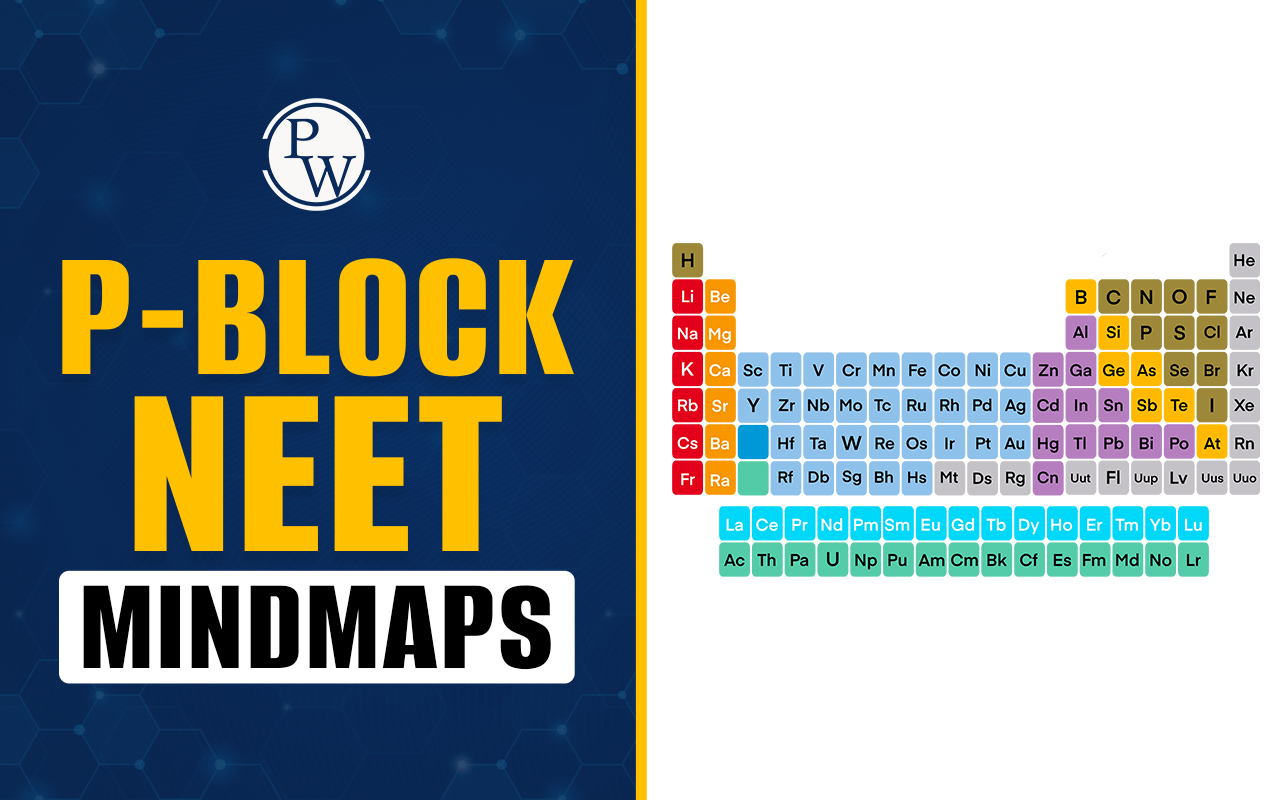
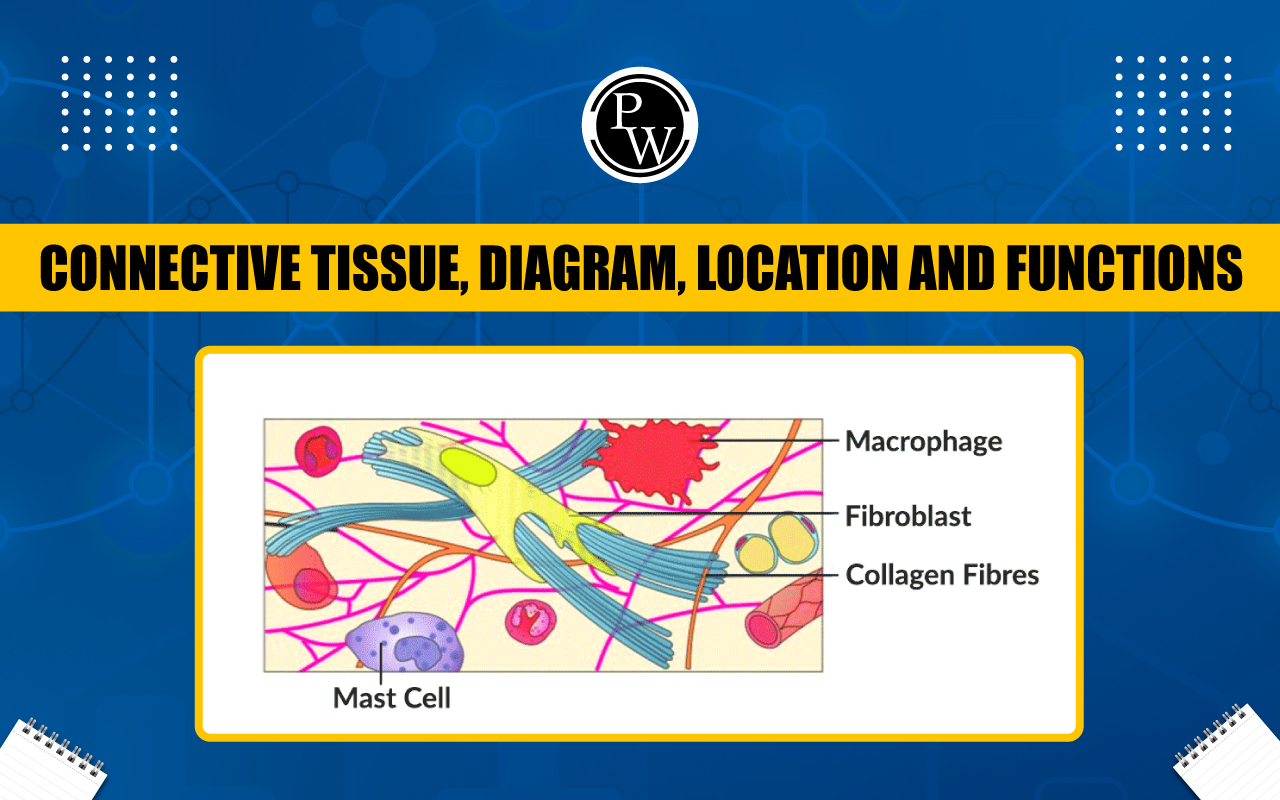
Connective Tissue: Connective tissues have several important functions in the body. They connect structures, support and frame organs, transport substances, store fat, protect against disease, and aid in tissue repair. These tissues are distributed throughout the body and are characterized by a large amount of intercellular matrix with relatively few cells. Although connective tissue cells can reproduce, they do so at a slower rate compared to epithelial cells. While most connective tissues have a good blood supply, some do not.
In connective tissue, various cell types can be found, with fibroblasts, macrophages, and mast cells being among the most common. There are different types of connective tissue, including loose connective tissue, adipose tissue, dense fibrous connective tissue, elastic connective tissue, cartilage, bone (osseous tissue), and blood. This topic is an important part of the chapter on structural organization in animals for the NEET exam .
Structural organisation in Animals MCQ for NEET
Connective Tissue Diagram
The diagram in the article below depicts various types of connective tissues and is a useful resource for NEET aspirants studying the structural organisation in animals in Class 11. It helps them understand the complexities of connective tissues, which is essential for their NEET exam preparation.
Connective Tissue Location
Connective tissues are distributed throughout the body, serving various functions in different structures and organs. Some common locations include:
- Skin: The dermis layer of the skin consists largely of connective tissue, offering support and elasticity.
- Tendons and Ligaments: Tendons connect muscles to bones, while ligaments connect bones to other bones. Both are composed of dense fibrous connective tissue, known for its strength and flexibility.
- Cartilage: Present in the nose, ears, and joints, cartilage is a resilient connective tissue that provides cushioning and structural support.
- Bone: Forming the skeletal framework, bone tissue offers support and protection to internal organs.
- Blood: Classified as connective tissue, blood comprises cells suspended in plasma and is vital for transporting substances throughout the body.
- Adipose Tissue: This connective tissue stores fat and is located under the skin, around organs, and within the bone marrow.
- Fibrous Tissue: Situated in the outer covering of organs like the liver and kidneys, fibrous tissue provides support and protection.
- Lymphoid Tissue: Found in lymph nodes, tonsils, and the spleen, lymphoid tissue is part of the immune system.
These examples illustrate the widespread presence and diverse functions of connective tissue in the body.
Tissues, Definition, Types of Animal Tissues and Functions
Types of Connective Tissue
Connective tissue refers to a variety of tissues that connect, support, and bind other tissues in the body. It is divided into three types: loose connective tissue, dense connective tissue, and specialised connective tissue.
'Dense Connective Tissue
Dense connective tissue is characterized by tightly packed fibroblast cells and fibres. Its primary role is to provide support and transmit mechanical forces. Unlike loose connective tissue, dense connective tissue is somewhat less flexible.

There are two main types of dense connective tissue based on the arrangement of collagen fibres:
- Dense Regular Tissue: In this type, collagen fibres are arranged in a regular orientation. They are found between parallel bundles of fibres, which enhances tensile strength and resistance to stretching in the direction of fibre orientation. Examples include tendons and ligaments.
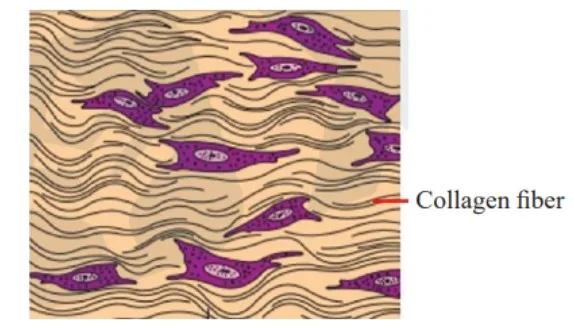
- Dense Irregular Tissue: This type contains many fibres, including collagen, arranged irregularly or randomly. This arrangement provides uniform strength in all directions and may form a mesh-like network. Dense irregular tissue is found in the dermis of the skin.
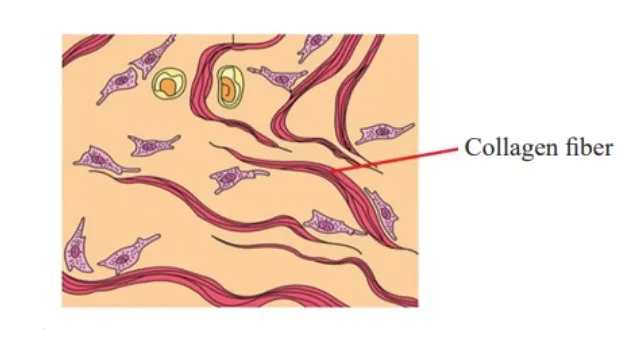
Epithelium Tissue, Types, Structure and Functions
Loose Connective Tissue
Loose connective tissues are found throughout the body where both support and elasticity are required. They wrap around blood vessels, nerves, and muscles, forming the subcutaneous layer beneath the skin along with fatty tissues, attaching muscles and other structures to the skin.

These tissues consist of fibers and cells loosely arranged in a semi-fluid matrix. They fill the spaces between many organs, acting as shock absorbers and reservoirs for salt and fluid.
- Areolar (Loose) Connective Tissue: This type of tissue is characterized by a loose array of random fibers and a wide variety of cell types. It nourishes and supports epithelial tissues, protects against infection, provides passage for nerves and blood vessels through other tissues, and helps hold organs together. Areolar connective tissue is mainly found in the outer covering of blood vessels, the esophagus, nerves, and other organs.
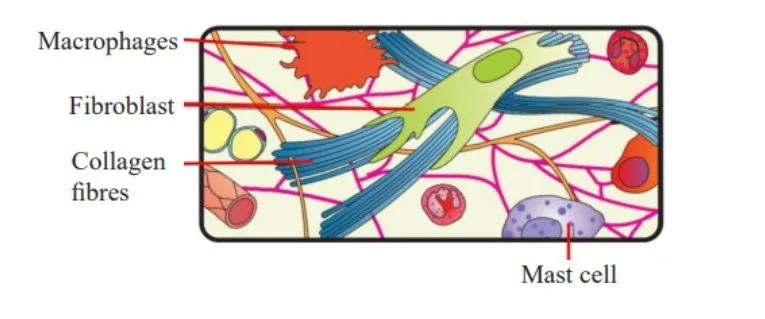
- Adipose Tissue: Adipose tissue is composed of fat-filled cells called adipocytes, surrounded by an extracellular environment. It stores energy, conserves body heat, cushion and protect organs, and gives the body its shape. Adipose tissue is commonly found around the kidneys, breast, heart, eyes, beneath the skin, and in the abdominal membrane.
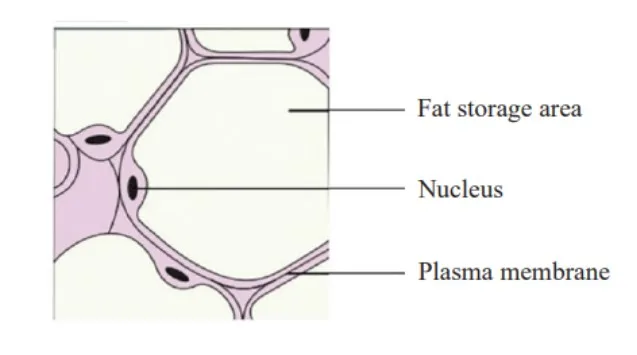
Specialized Connective Tissue
Besides these, supportive connective tissues help maintain correct posture and support internal organs, such as cartilage and bone. Blood and lymph are fluid connective tissues that circulate in the body and aid in interacting and communicating among all the organs.
Cartilage
- The intercellular material (matrix) of cartilage is solid and pliable due to chondroitin salts, which resist compression.
- Cartilage cells (chondrocytes) are enclosed in small cavities (lacunae) within the matrix that they secrete.
- Chondrocytes are seen in groups within the lacunae.
- Chondrioclasts are cells that destroy cartilage.
- Chondrin is the cartilage protein.
Most of the cartilages in vertebrate embryos are replaced by bones in adults. Cartilage is present at the:
- Tip of the nose
- Outer ear joints
- In the vertebral column, between adjacent vertebrae
- At the articulating ends of long bones (e.g., limbs) to prevent friction.
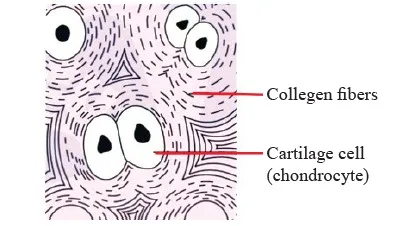
Bones
- Bones have a hard and non-pliable matrix rich in calcium salts and collagen fibers, which give bones their strength.
- Bone cells (osteocytes) are seen in a space called lacunae.
- Ossein is the bone protein.
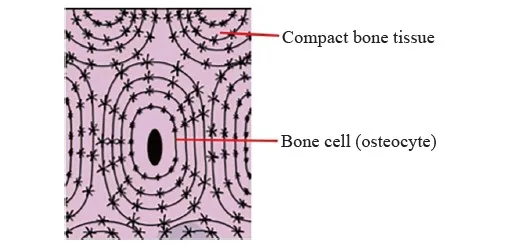
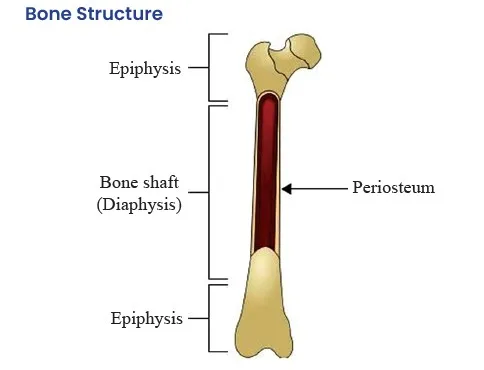
Functions of Bones:
- Main tissues that provide the structural frame to the body.
- Support and protect soft tissues and organs.
- Limb bones serve weight-bearing functions.
- Take part in locomotion and movements.
- Blood cells are produced in the red marrow of bones (red bone marrow).
- The special connective tissue consists of a liquid matrix in which cells are suspended.
- Fluid connective tissue is devoid of fibers.
Blood
- Blood is a fluid connective tissue containing plasma, red blood cells (RBCs), white blood cells (WBCs), and platelets.
- It is the main circulating body fluid that transports various substances.
Functions of Blood: Blood has different functions, including the transportation of oxygen and nutrients to the lungs and tissues, forming blood clots to prevent excess blood loss, and carrying cells and antibodies that fight against pathogens and infections.
Lymph
- Lymph is a colorless fluid that circulates throughout the lymphatic system.
- The main role of the lymphatic system is to act as a filter against microbes, organic wastes, and toxins.
- It carries lymphocytes.
Connective Tissue Functions
Connective tissues play several important roles in the body, serving as a structural framework, connecting various organs and tissues, and assisting in metabolic functions. Here are some key functions of connective tissues:
- Structural Support: Connective tissues provide support and shape to organs and tissues. For example, cartilage and bone support the body and protect vital organs.
- Binding and Connecting: These tissues bind and connect different tissues and organs, maintaining the body's structure and stabilizing joints.
- Protection: Connective tissues protect delicate organs and tissues. For instance, adipose tissue cushions organs, shielding them from physical impact.
- Transportation: Blood, a fluid connective tissue, transports nutrients, oxygen, hormones, and waste products. Lymph, another fluid connective tissue, helps in immune cell and fluid transportation.
- Storage: Adipose tissue stores energy reserves as fat, while bones store minerals like calcium and phosphorus, releasing them into the bloodstream as needed.
- Insulation: Adipose tissue acts as an insulator, helping to maintain body temperature.
- Repair and Healing: Connective tissues aid in the repair and healing of injuries, forming scar tissue and assisting in tissue regeneration.
- Immune Response: Connective tissues containing immune cells, such as lymphocytes, contribute to the body's immune response by defending against pathogens.
In summary, connective tissues are vital for maintaining the body's functions, providing support, protection, and coordination among organs and systems.
Connective Tissue Examples
Connective tissues are diverse and found throughout the body, each serving specific functions. Examples include:
- Bone: Provides structural support, protects organs, and stores minerals.
- Cartilage: Provides flexible support and cushions joints.
- Tendons: Connect muscle to bone, allowing movement.
- Ligaments: Connect bone to bone, stabilising joints.
- Adipose Tissue: Stores energy, cushions organs, and insulates the body.
- Blood: Transports nutrients, oxygen, hormones, and waste products.
- Lymph : Transports immune cells and fluid.
These examples highlight the diverse roles connective tissues play in the body's structure and function.
Physics Wallah offers the most effective NEET Online Coaching to help students prepare for the NEET UG exam. PW NEET Coaching Online will guide NEET aspirants and help them understand where they need to improve. Students who want to practice for the actual NEET exam can also use the previous year's NEET practice papers . Enroll Now!
| NEET Exam Important Links | |
|---|---|
| NEET Biology Syllabus | NEET Biology Diagrams |
| NEET Biology MCQ | NEET Biology Chapter wise Weightage |
| NEET Exam Notes | NEET Previous Year Question papers |
Connective Tissue FAQs
What are the 7 types of connective tissue?
Why is connective tissue called so?
What are the four main types of connective tissue?
What are connective tissue examples?
What are the three categories of connective tissue?
What are the classifications of tissues?









